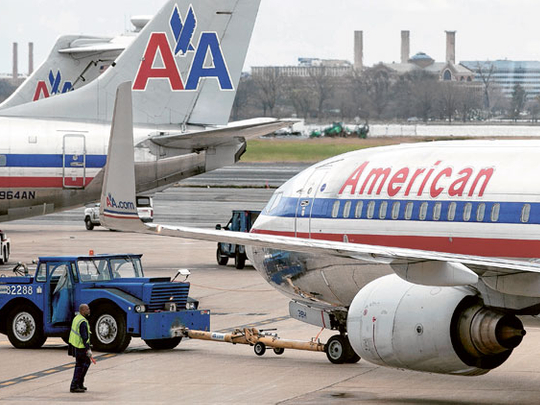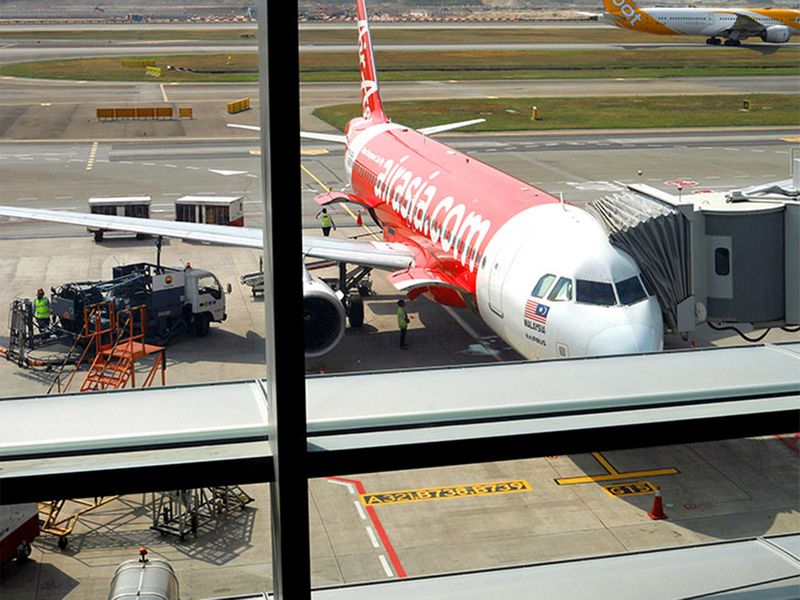
New York: The nightmare year of 2020 brought the airline industry's first decade of sustained profitability to a shuddering halt. The coronavirus pandemic tore through in a tumultuous, unprecedented way, leaving carriers in a deep hole - along with a constellation of aerospace manufacturers, airports and leasing firms.
2021 is shaping up to be a transition year for an enterprise that takes passengers on the equivalent of 208 million annual trips around the globe. At best, the path ahead will be bumpy, with progress toward a return to travel dependent on the pace of vaccine roll-outs, access to capital, government policies and the unpredictability of a virus that's not yet fully understood. Still, there will be leaps, including the first commercial flights to near-space.
Here are some developments to look for over the next 12 months.
Slash away
Airline traffic won't see a major boost until vaccines saturate enough of each country's population to stamp down infection rates. Even then, it may take effort to get some people back on planes.
In Europe, that'll mean fares as low as 9.99 euros ($12.33), according to Ryanair Holdings Plc CEO Michael O'Leary. Other ideas being floated to entice travelers are free hotel stays, 2-for-1 deals and complimentary travel insurance.
Travel-pass promotions from carriers such as China Eastern Airlines Corp. - which is offering unlimited flights for a single price - have proved popular and been extended into this year, while online agents show ultra-cheap trips in China for the Lunar New Year holiday next month.
The key question is how long it'll take to wean customers off those incentives. An upturn in leisure and family travel should hit by mid-year, depending on the region. More lucrative business traffic is likely to trail as companies resist sending people out on the road.
John Grant, chief analyst at flight-bookings specialist OAG, says it won't be a recovery until enticements are no longer needed and carriers can manage routes for profit.

Debt laden
Airlines raised record amounts of money in 2020. More will be required in 2021. Stock sales and debt conversions will take on a greater importance as companies try to restore balance-sheets to health.
Governments, which ponied up $220 billion in state aid last year according to Moody's, will continue to play a role. France and the Netherlands, the largest shareholders in Air France-KLM, are in negotiations to inject billions of euros more, while converting part of the 10.4 billion euros already loaned into hybrid debt.
Carriers like EasyJet are likely to raise more equity, while cash burn remains a concern, according to Daniel Roeska, an analyst at Sanford C. Bernstein. Some airlines are in more desperate straits.
Norwegian Air Shuttle ASA's court-supervised restructuring plan relies on attracting new investment and would largely drop the low-budget trans-Atlantic business it's known for to focus on regional services. Creditors of bankrupt Thai Airways International Pcl are due to consider a rehabilitation plan in February.
AirAsia X Bhd., the Malaysian long-distance carrier, and Thailand's Nok Airlines Pcl are also due to present plans in coming months. US airlines will receive $15 billion in federal aid to help pay workers through March 31, on top of $25 billion in similar help provided during 2020. The US Treasury Department has made billions more available in the form of loans.

Primed for grounding
Dozens of airlines have disappeared or filed for bankruptcy since the pandemic began. More are on life support, in danger of getting swallowed by stronger players.
In Germany, Deutsche Lufthansa AG is taking straight aim at holiday specialist Condor by adding routes to sunny spots like Zanzibar and Corfu. Condor, once a Lufthansa unit that in 2019 survived the failure of then-parent Thomas Cook, could make a tempting target.
However, some big players like Lufthansa that accepted bailouts may be prevented from making purchases by terms of state aid packages.
In India, Tata Sons Ltd. bought out struggling partner AirAsia Group Bhd.'s stake in a local joint venture. State-owned Air India is another potential target, possibly through Vistara, Tata's venture with Singapore Airlines Ltd. Air India's buyer would "definitely need to make it a lot leaner," Bloomberg Intelligence analyst James Teo says.

Wide or narrow
While interest is starting to pick up for smaller jetliners, the market for twin-aisle aircraft from Airbus SE and Boeing Co. is "beyond grim", said aerospace consultant Richard Aboulafia. Sales were depressed before the outbreak, and a surplus of used models will crimp demand for years.
With long-distance travel on hold, Airbus and Boeing have seen higher retirement rates for their biggest planes within airline fleets and a dearth of new orders. And there's not much sign of encouragement. Boeing is fighting to hold on to orders for the largest plane on the market, its 777-9, which is two years behind schedule.
Analysts see more production-rate cuts ahead for the better-selling Boeing 787 - which is also beset by production snafus - and the Airbus A350. Output of the less-popular A330 could go down to one a month, according to Agency Partners analyst Sash Tusa.
The plane has struggled to attact orders despite a reengined version, with biggest customer AirAsia X's financial troubles the latest blow. Still, analysts predict the program will limp on at lower rates rather than being scrapped.
Route consolidation
Major airlines packed into ever smaller destinations as the boom in air travel hit its zenith in 2019. Now, they're dropping newly unprofitable routes to stem losses. Fewer flights, smaller planes and reduced big-city connections are eating into the economies of several tourism-dependent locations.
Some of the pullback could last indefinitely, according to OAG's Grant. Particularly vulnerable are long-haul routes that were still in their developmental phase. From late March, British Airways will permanently axe 13 long-haul destinations across North America, the Middle East, South Africa and Asia.
Cathay Pacific will cease operations to seven global locations as losses mount. Cities such as Manchester, England, are vulnerable to weakening links to key markets like China, while flights from Beijing to Lisbon, Barcelona and even Madrid could come under pressure as airlines re-evaluate.
Large Middle Eastern carriers like Emirates and Qatar Airways, which thrive on whisking passengers across the world, aren't likely to fill the gaps, according to Grant. He says they're serving as many destinations as they realistically can, given a dearth of connecting traffic.
"It's more about getting back to pre-COVID-19 capacity and demand levels."








